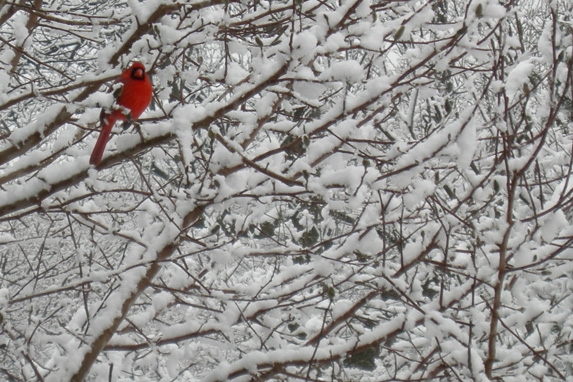
Winter is a time of muted colors and interesting textures outdoors. Greens, grays, browns, and whites dominate the landscape but are interspersed with flashes of red, yellow, orange, pink, and purple berries. Decorative planters contain creative arrangements made from seasonal trimmings of hollies, other evergreens, crapemyrtles and ornamental grasses. Take time to notice the seedheads on ornamental grasses, flowers, bushes, and the bladdernut seedpods. Notice the various colors and textures of the bark on trees with names such as lacebark pine, ironwood, musclewood, striped-bark maple, and paper birch. Indoors, the conservatories (the Climatron, the Temperate House, and the Linnean House) are cozy, colorful, and fragrant all year long.
Missouri Botanical Garden is open every day except Christmas. Unlike plants that go dormant during winter, the horticulture staff remain active throughout the coldest months of the year.
Outdoor staff continue the fall duties of leaf pickup and mulching perennial beds. Without leaves to obstruct the view, winter is the ideal time to prune many of our deciduous shrubs and trees. Staff also tackle the often monumental task of snow removal.
Inside the Orthwein Floral Display Hall, the festive Holiday Show begins on the Saturday before Thanksgiving and ends on the first Sunday of the new year. The floral display crew is assisted by the greenhouse crew and some of the outdoor staff in installing and maintaining this impressive floral show. At the same time, they are preparing for the upcoming Orchid Show, which runs from early February through mid-March.
The permanent indoor plant collections (research, orchids, tropical foliage, and cacti and succulents) are maintained year-round by the greenhouse crew. Additional winter duties include propagating plants for summer displays, ordering plants for next year's holiday show, and helping install and maintain the floral shows.
Because the conservatories are continually blooming under glass, duties remain somewhat the same through the year. Some smaller plants are changed seasonally in the Moorish Garden of the Temperate House and in the Linnean House. Look for cyclamen and poinsettias brightening these two conservatories and countless other blooming plants in all three conservatories.